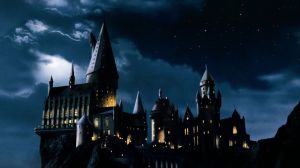Before the year is over, moviegoers will be transported to World War I for an epic-looking film from visionary director Sam Mendes with his upcoming 1917 film. It will release in select theaters on Christmas before seeing a wider push in early January. However, this isn’t just any old war movie. This time around, moviegoers will be immersed into the world of World War I for more than two hours through a movie which is cut to have no cuts. The entire film will roll as though it were one continuous shot with the characters and cameras moving constantly, sprawling across locations for about two and a half hours. While cinematagropher Roger Deakins has compiled an impressive resume through his years of work, bringing Mendes’ single-shot vision to life was no easy feat.
Videos by ComicBook.com
“The biggest challenge was to sort of have the camera connected to the characters so it was in the right place to tell the story, to get the right reactions, see the scenes, see the surroundings,” Deakins told ComicBook.com at New York Comic Con. “So it was like a big dance. It’s always that. Any film you do you’re figuring, oh where do we want to play this wide? Do we need to see a reaction? What is the best angle? But obviously here all that had to work as one. So it was very much for Sam to stage the action, and us to stage the camera in a sort of balletic way that each complemented the other.”
The script of Mendes’ and Krysty Wilson-Cairns’ story warned everybody of the single shot approach on its cover page so everyone immediately knew what they were getting into. However, beyond that, the responsibility fell onto Mendes and Deakins through a challenging, creative, collaborative process. “That was the whole process of us, Sam and I, sort of starting to storyboarding it, doing images,” Deakins said. “And then playing around with ideas. And then working with the actors, and rehearsing with them and seeing, well if we went there and they went there…”
While the movie itself will run for more than two hours continuously, the production actually ranged a various short takes which are being stitched together in a format to give the illusion of everything taking place consecutively. Of course, some takes ran longer than others. “I think the longest was about eight and a half minutes,’ Deakins recalls. “And the thing about doing something that long is it’s obviously a lot of complex choreography. And then the longer shot goes on, say if I’m operating on a remote stabilizer system, I’m sitting there, and Andy Harris, my focus puller, is sitting there and we’re all going… You get towards the end and you think, if anybody makes a mistake, then you’ve got all that other seven and a half minutes to go back and start again. And there might be explosions! So the pressure builds with the length of the shot. It’s interesting.”
The smallest little details would result in starting takes completely at the top. “Sometimes we had to do a shot again because the way the camera moved at the end didn’t really sync with how we imagined we were going to go into the next shot, as it were,” Deakins said. “And so the blends might be from one location. And then three weeks later, or a couple of weeks later, you pick it up in another location. Somewhere totally different, and you gotta match where you’re coming out of. So that’s were you kind of get in trouble.”
1917 hits theaters on December 25, with a wider release scheduled for January 10, 2020.








